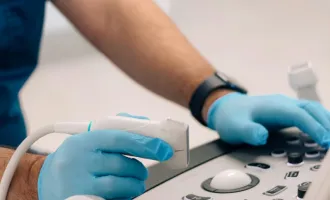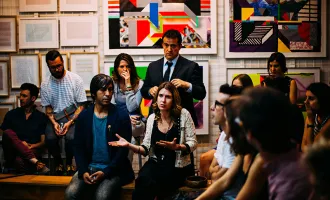Dr. Mary Maxon: Inspiring Women in Sciences
Women are notoriously underrepresented in the world of politics. In Congress, only 20% of the seats are held by women, which is disappointing considering the fact that women make up 50%of the U.S. population.
Despite this, women have continually acted as strong influences on all levels and in all branches of government. From the notorious Ruth Bader Ginsburg in the supreme court to Senator Elizabeth Warren, an integral part of shaping the future vision of the democratic party, women are shaping the political landscape.
Two student and postdoc groups at UCSF, Women in Life Sciences and the Science Policy Group, are collaborating to host a series on ‘Women and Science Policy’ that aims to show the diversity of roles thatmerge science and policy, the women behind several of these roles, and the policies that affect women in science. This series is supported by the Office of Science Policy and Strategy, with additional assistance from the Office of Community and Government Relations.
As part of this series, we heard from women who work on different aspects of science policy at UCSF, specifically the Director of Research Strategy, India Hook-Barnard, PhD; the Associate Chancellor, Theresa O’Brien, PhD; core member of the Center for Vulnerable Populations, Margot Kushel, MD; and the Associate Dean for Graduate Programs, Elizabeth Silva, PhD.
These women work and advocate in very different realms of science policy, including career and professional development for students and postdoctoral scholars; health care for homeless and other vulnerable population groups; and funding for basic, clinical, social and behavioral research. Although many paths can lead to a role in science policy, these women shared a commitment to improving scientific research in a systematic and structural way.
“After thinking about the many ways women at UCSF are impacting science policy, we wanted to expand our scope to consider science policy at the state and national level,” explained Katie Thompson-Peer, PhD, the current chair of the ‘Women and Science Policy’ series and a postdoctoral fellow in the physiology department. In this context, on February 16th Dr. Mary Maxon came to UCSF for a conversation on science policy at the national level, moderated by Dr. Hook-Barnard.
Maxon got her PhD in Molecular Cell Biology at UC Berkeley followed by postdoctoral research at UCSF in biochemistry and genetics. Following her academic experience, Maxon joined the biotechonology startup environment.
Maxon first ventured into science policy with her work at the California Institute for Regenerative Medicine as the Deputy to the Vice Chair. There, she helped to draft California’s intellectual property policies regarding stem cell research funding.
Afterwards came a sequence of events and positions that landed her a seat in the White House, where Dr. Maxon led an effort to create the National Bioeconomy Blueprint. This crucial document was published in 2012, following Obama’s 2010 Priorities Memorandum where Bioeconomy was included as a Federal budget priority.
As Assistant Director for Biological Research at the White House Office of Science and Technology Policy (OSTP), Maxon helped define the bioeconomy to include health efforts, including: reducing dependence on oil; mitigating environmental problems; increasing agricultural output; and transforming manufacturing processes.
Designing the blueprint required well coordinated efforts among many interest groups including NIH, USDA, DoE, US Forest Service, United States Geological Survey (USGS) , National Oceanic and Atmospheric Administration (NOAA), and all in collaboration with different White House policy committees and the Office of Management and Budget.
In addition to playing an integral role in developing the bioeconomy blueprint, Dr. Maxon can also be ‘blamed’ for initiating an effective science policy training program at the state level. Hoping to implement the best properties from the federal AAAS science policy fellowships, the California Council of Science and Technology (CCST) fellowship was created. The program is so successful that it is being replicated in many states across the country.
Currently, Maxon is no longer in DC, but instead is the Biosciences Area Principal Deputy at the Lawrence Berkeley National Laboratory. The Biosciences project is an enactment of the Bioeconomy blueprint’s vision.
After following Dr. Maxon’s inspirational path, one has to ask, what can we do to influence policy and policymakers? Working in Washington is only one of many ways that we can shape policy on topics that we are knowledgeable about.
As bench scientists, each of us can identify solutions that might be relevant in the context of the laboratory. There are opportunities you can use to make your ideas heard by policymakers.
Contact your representatives at the state or federal level: call them and email them. As public servants your representatives have an obligation to listen and respond to you.
One very useful way to convey your ideas and thoughts are white papers. White papers are “a succinct compelling statement with an idea,” Maxon explains. Consider writing a write paper with a group of colleagues and use your expertise and credentials to bring a strong and clear message across.
Respond to Requests for Information. RFI’s purpose is to solicit feedback on topics of relevance to the US that still lack a clear response. These are direct ways by which Federal Agents reach out to the public and ask for our input. Do you have an idea or suggestion on a topic the Government is inquiring about: write a white paper with your structured thoughts.
According to Dr. Maxon, “impact is as simple as a phone call, it is as simple as an email, and it really does matter.” Use it: your research and ideas can have a role in shaping future policy!


